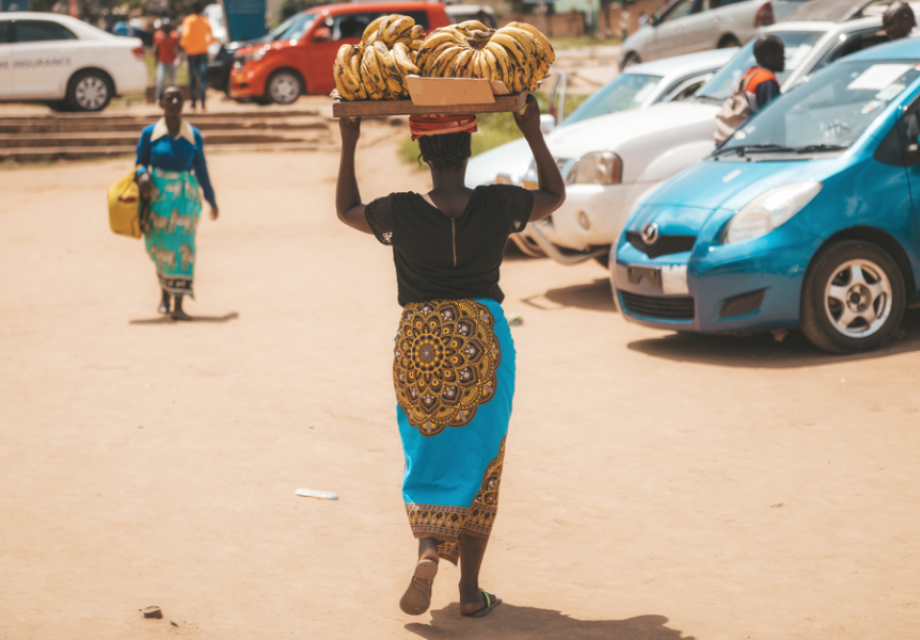Sex worker study shows the power of peer-led services
Hester Phillips
20 January 2023
Women who sell sex in Nsanje, Malawi show a high-level of engagement with HIV treatment due to the existence of peer-led services
Despite high levels of HIV, unwanted pregnancies and sexual violence, women who sell sex in Nsanje, Malawi are engaging with HIV treatment at a similar rate as other women in the area due to the existence of peer-led services, a new study has found.
What is the research about?
Female sex workers in Nsanje, where many adolescent girls and women sell sex along the district’s transport routes. Since 2013, Médecins Sans Frontières has provided HIV and sexual and reproductive health (SRH) services to female sex workers in the area using a mix of peer-led, community-based services and ‘one-stop’, HIV/SRH services in friendly facilities.
For the study, researchers asked 363 female sex workers (aged 13-55) to answer survey questions and take HIV and STI tests.
Why is this research important?
In sub-Saharan Africa, HIV prevalence among female sex workers is high, estimated at around 18%. Levels of sexual violence, unmet contraceptive needs and unwanted pregnancies are also high. Adolescent girls and young women who sell sex are particularly vulnerable.
Despite this, there is limited research on what female sex workers in Malawi need when it comes to HIV and sexual and reproductive health, particularly adolescent sex workers.
What did they find out?
The women in the study were mainly young, single mothers (median age 26). One-quarter (26%) were adolescents (aged 13–19). Close to two in five started selling sex before they were 19.
HIV and sexually transmitted infections
More than half of participants had HIV (52.6%). HIV prevalence increased with age. It was 14.7% among adolescent sex workers but 87.9% among sex workers aged 35 or above. HIV prevalence among women from Nsanje’s general population is estimated at 14%.
Sex workers with HIV were well engaged with the HIV treatment cascade. Around 95% with HIV were diagnosed, of which 99% were on antiretroviral treatment. Of these, 83% were virally suppressed. These levels are similar to Nsanje’s general female population. However, adolescent sex workers with HIV were much less likely to be virally suppressed than older sex workers (63% compared to 84%).
Syphilis prevalence was 29.7%, chlamydia 12.5% and gonorrhoea 9.5%.
Contraception, pregnancy and abortion
Around 83% of participants used contraceptives. After condoms, injectable contraceptives were the most common method, followed by implants. Around half of participants (53%) did not use condoms consistently.
Around half of participants (52%) had their first pregnancy before they were 19. This is much higher than the general population rate of 29%.
Just under three-quarters (72%) had experienced at least one unwanted pregnancy. Adolescents were three times more likely than those over 20 to report unwanted pregnancies.
Around 18% of participants had experienced at least one abortion, 40% of which were unsafe.
Sexual violence
Half of participants had experienced sexual violence (48%). Of these, 57% had experienced it in the last month. This suggests the true extent of sexual violence may be higher than reported. More than one in ten (14%) had been raped by a police officer. Adolescents reported a similar level of sexual violence as older sex workers.
PrEP and PEP
Only 2% were aware of PrEP. Just over half were aware of PEP. But among those who knew about PEP and did not have HIV, less than half (41%) had used it.
What does this mean for HIV services?
The study shows that providing a mix of peer-led and friendly facility services works when it comes to providing sex workers with HIV treatment. But the finding that adolescent sex workers with HIV were less likely than older sex workers to be virally suppressed shows how important it is for services to consider age-specific needs.
The high rates of teenage pregnancies, unwanted pregnancies and terminations show that knowing about contraception and being able to access it is also essential for sex workers. This is especially true for adolescent sex workers who are more likely to have children at this age than other adolescent girls. Providing emergency contraceptives and safe abortion care, despite abortions being illegal in Malawi, are important SRH services to include.
Given the high level of sexual violence, providing information and access to PrEP and increasing PEP access could also be very effective. The trauma that female sex workers experience due to sexual violence should also be considered and appropriate mental health support provided.
But sexual violence and stigma against sex workers will not stop until attitudes among the wider community change. It is particularly urgent to work with the police in this area, given the finding that some police officers are perpetrating these acts.
Get our news and blogs by email
Keep up-to-date with all our latest news stories and blogs by signing up to the Be in the KNOW news digest.
